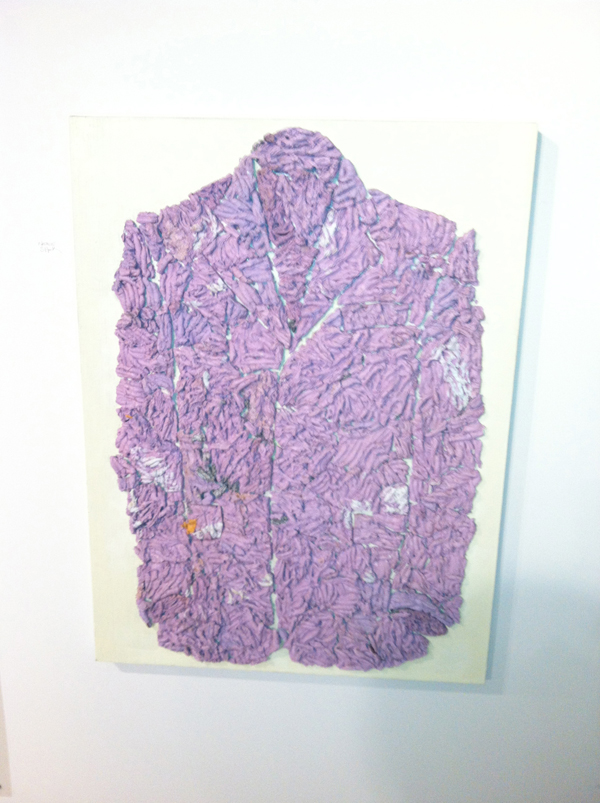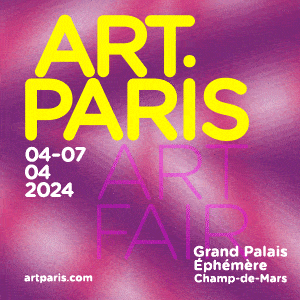Whitehot Magazine
April 2024
"The Best Art In The World"
"The Best Art In The World"
April 2024
April 2012: Brucennial 2012: Harderer. Betterer. Fasterer. Strongerer.
 Brucennial, First Floor Installation View, 2012. Courtesy of Bruce High Quality Foundation.
Brucennial, First Floor Installation View, 2012. Courtesy of Bruce High Quality Foundation.
Brucennial 2012: Harderer. Betterer. Fasterer. Strongerer.
159 Bleecker Street New York
February 29-April 20, 2012
The Bruce High Quality Foundation, also known as the Bruces or BHQF, is an anonymous, rotating collective keen on fostering "an alternative to everything." Their 2012 Brucennial, now in its third incarnation, has been a literal substitute to the Whitney Biennial's pomp. The show is staged in a former theater turned pop-up playground with four floors jam-packed with art. All the work, including pieces by Joseph Beuys, Sigmar Polke, Andy Warhol, and Cindy Sherman, are for sale. The show was conceived in 2008, four years after the collective itself sprouted. Vito Schnabel has been a key component in this experimental smoothie since 2010. Together BHQF and Schnabel harvested an incredible roster of artists, emergent and established, living and dead, for this year's show.
Each wall in the exhibition is overflowing, floor to ceiling, with work ranging from Bridget Mullen's flat cardboard tessellation to Max Davis's grid of aerial photography. No artist or theme is given precedence. This democratic installation does, however, proves disadvantageous for smaller works at high altitudes. Damien Hirst's spot painting is pleasantly out of the way, while Matt Alie's violet still life would benefit from a closer view. The assortment of work in the show caters to the grazing pedestrians wandering up Macdougal Street or looking for a break from the delirium at Bobst Library. Although painting and collage were the most prevalent mediums, a handful of videos in the basement and sculpture on the top floor rounded out the show. Photography was in short supply.
 Courtesy of Brucennial, 2012.
Courtesy of Brucennial, 2012.
In his review of the 2010 Brucennial for the New York Times, Holland Cotter noted that "change means doing what the mainstream does, but doing it differently." Right now the "mainstream" is outwardly obsessed with branding. Whether that means spreading your business thin with international outposts or acquiring high-profile representation as an artist, everyone is trying to cultivate an art star. The Brucennial is a wrench in that system, putting each creation on the same plane. Schnabel has mentioned that his fascination with collaborative exhibitions in the 1980s inspired his participation in the Brucennial. Disparate artists provided a single work, a whiff of their practice, accompanied by a scribbled label in pencil lead. Each artist sacrifices themselves to the room, generating an exhibition that is at once communal and selfish. One's practice could be enunciated by a single statement piece, and each artist had to choose whether they'd present a whisper or a yelp in this visual orgy. I came to appreciate the unpredictable juxtapositions despite my initial disorientation. Among 400 artists, I reveled in the scavenger hunt for work that could stand alone.
To say there is no context for this show, however, would be incorrect. The larger concepts of history and fiction have been important to BHQF since their inception, highlighted by the Bruce High Quality Foundation University started in 2009. They are proponents of "framing things in a way that we feel is more accurate -- even if it's steeped in fiction". Although the bizarre collage by Gretchen Kraus might not sell for as much as the Basquiat at the Brucennial, the myth of solidarity exists. Conversely, it forces the viewer to address the ease with which history influences production, currently and always. BHQF explains:
"There is always this constant fear of what art history is. Everything's been done, so how are you going to do something important in relation to that? It's been important for us to think of art history as a material, as more stuff to work with, whether it's to honor or to disparage it. It's as much a material as anything else, wood or plaster."
 Max Davis and Eliot Greenwald. Courtesy of Brucennial 2012.
Max Davis and Eliot Greenwald. Courtesy of Brucennial 2012.
The past remains a living, breathing animal that will ruin those who attempt to consider it sentimentally. BHQF reanimates the past and inspires a reassessment of modern production. Not surprisingly, there are introspective, societal, and cultural components that might forever appeal to artists. Life, death, power, and gender produce innumerable curiosities, and the line between past and present blurs. The Brucennial chops the pedestals of rank and prowess into stubs, presenting a survey of the Bruces' visual stimulation rather than the best or worst.
I left the exhibition generally pleased and intrigued by several artists I had never heard of. It got me thinking about what exactly this show might do for the artists, and if the Brucennial was indeed doing something innovative. Before the Internet, when finding obscure artists required a plane ticket or an extremely knowledgeable international spy, movements were meticulously defined. Retrospectively, it might appear that there were more molds to break and a variety of delinquent directions. The schizophrenic aura of the Brucennial is something truly unique, proving there are still many boundaries to be broken. They present chance encounters that unknowingly parallel the past and present, dispelling the usual constraints of an exhibition. This "amateur solution" to a "professional problem" is a triumph for the Bruces, inviting the discovery of microscopic innovations in a deceptive ocean of history in the making.
 Nathalie Shook, 3D Periwinkle Paint Suit Jacket. Courtesy of Brucennial 2012.
Nathalie Shook, 3D Periwinkle Paint Suit Jacket. Courtesy of Brucennial 2012.
 Ed Kaplan and Frank Stella. Courtesy of Brucennial 2012.
Ed Kaplan and Frank Stella. Courtesy of Brucennial 2012.
 Matt Alie, Purple Still Life. Courtesy of Brucennial 2012.
Matt Alie, Purple Still Life. Courtesy of Brucennial 2012.

Lynn Maliszewski
Lynn Maliszewski is a freelance writer and aspiring curator/collector residing in New York City. She can be reached at l.malizoo@gmail.com
PHOTO CREDIT: Benjamin Norman (www.benjaminnorman.com)








